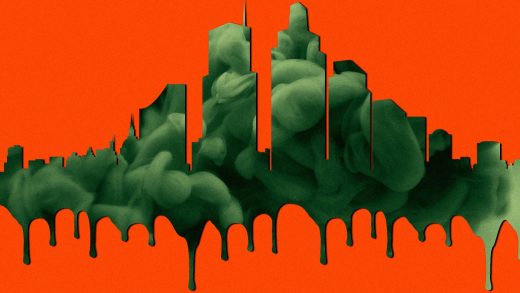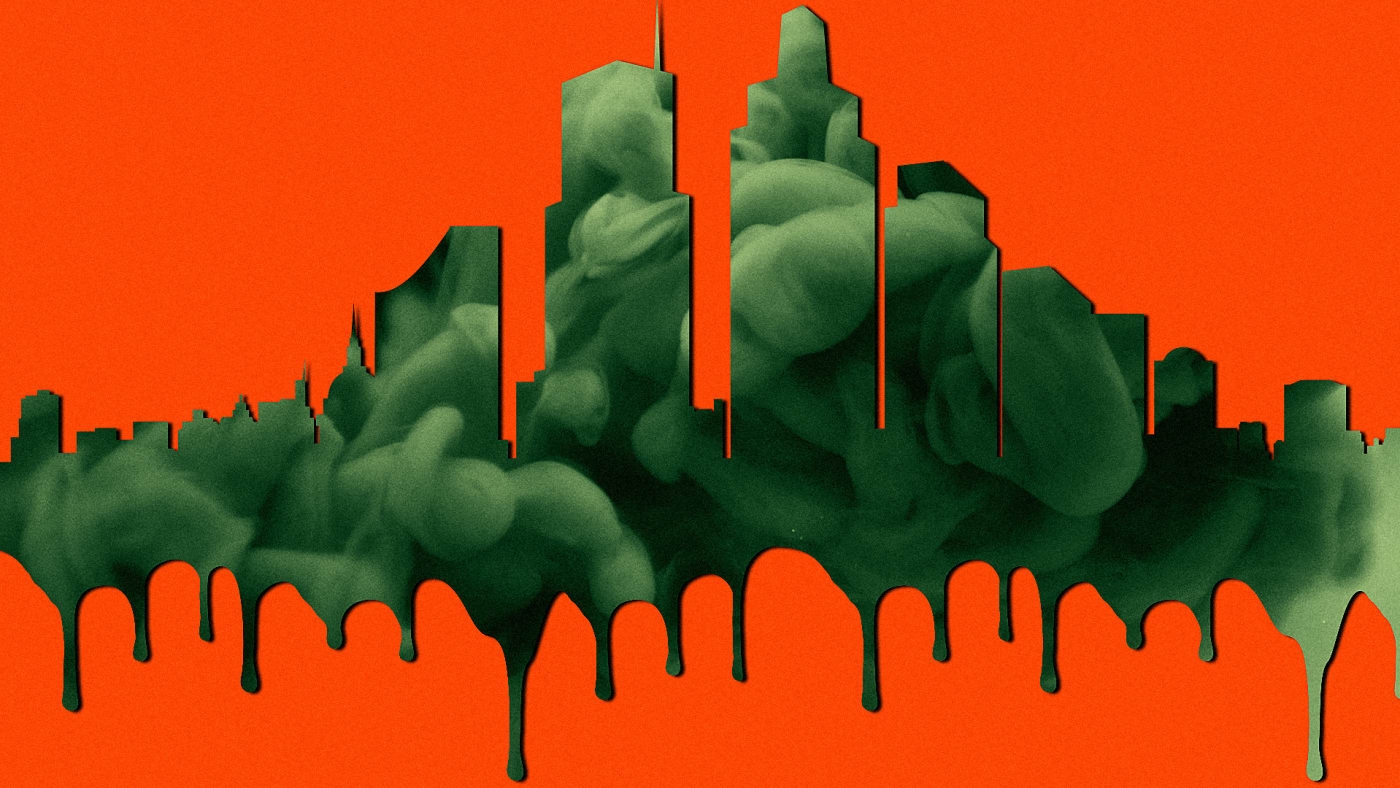Under Trump’s EPA, asbestos might be making a comeback
Asbestos, a dangerous carcinogen outlawed in more than 55 countries, could make a comeback in the United States, under Trump’s Environmental Protection Agency. The EPA has even made it easier for companies to introduce new uses of asbestos-containing products in America—many of which could end up in common products in your home, as well as the materials used to build it.
While products derived from asbestos may not hold a direct threat to consumers, the environmental advocacy group Healthy Building Network tells Fast Company the health risks are significant for workers who mine the toxic material, as well as those who handle it in industrial facilities that import it. Surrounding neighborhoods where asbestos fibers may be released into the air, as well as those in proximity to the landfills where they may ultimately end up, are also affected. People in the building community, who are exposed to the fibrous material while renovating and constructing our homes, schools, and offices, also remain at risk.
Once touted as a “magical mineral,” asbestos carries heat, electricity, and chemically resistant properties that made for common applications in a wide range of manufacturing materials, and especially building insulation, before knowledge of its grave health risks caused many countries to ban its use in the 1970s.
Today, asbestos exposure is irrefutably linked to illnesses including lung cancer and mesothelioma. While the U.S. has restricted use of the material over the years—most notably with the EPA’s 1973 Clean Air Act and 1989 Asbestos Ban and Phase Out Rule—it remains one of the only developed nations that has still not banned it outright, in a clear ongoing tussle between corporate and public interest. New data released this year shows asbestos-related deaths in the U.S. total nearly 40,000 annually, more than double previous estimates of 15,000.
Posted by ??? “??????????” on Sunday, June 24, 2018
On June 1, the EPA enacted a “SNUR” (short for Significant New Use Rule) allowing the manufacture of new asbestos-containing products to be petitioned and approved by the federal government on a case-by-case basis. Under an amendment to the 1976 Toxic Substances Control Act (TSCA) that passed in 2016, during the Obama administration, asbestos also remains one of ten prioritized substances currently being evaluated by the EPA.
On the nose, that may sound like Trump’s EPA is diligently regulating asbestos—but as the New York Times reported, the agency has significantly narrowed the way it evaluates the risk of potentially harmful chemical substances, all but making these two safety measures moot, and signaling a win for the powerful chemical lobby. A lengthy report of EPA’s new “framework” for evaluating risk, placed into effect this month, detailed how it would no longer consider the effect or presence of substances in the air, ground, or water in its risk assessments—effectively turning a blind eye to improper disposal, contamination, emissions, and other long-term environmental and health risks associated with chemical products, including those derived from asbestos.
“The Trump administration rewrote the rules to be dramatically less protective of human health … experts who have looked at [the document] have said that in the end, it pretty much gives EPA discretion to do whatever it wants,” says Bill Walsh, board president of the Healthy Building Network, which he founded in 2000 to bring greater transparency to the building products industry. The organization’s resources include the Pharos Project, an independent database cataloging the risks of more than 88,000 chemicals and materials. “The EPA’s failure to further regulate asbestos continues to provide a green light for its continued use in the U.S., even as it has been curtailed overseas,” Walsh added.
Reached for comment by Fast Company on how exactly its agency was working to protect Americans from environmental and public health risks associated with asbestos, the EPA simply confirmed its implementation of the SNUR and its plans to continue its evaluation of asbestos under the revised TSCA.
According to HBN, the only industry in the United States to still use asbestos is the chlor-alkali industry, which imports an estimated 480 tons of asbestos a year. Last week, HBN issued an extensive report detailing concerns on chlorine-based plastics that are used commonly in building and construction products. “In the case of asbestos, right now virtually all asbestos in the U.S. is used in the industrial process that makes chlorine,” says Walsh. “Most of that chlorine is used to make plastics, and the largest single use of chlorine is for PVC or vinyl plastics,” which makes its way into a plethora of building materials—everything from pipes, tiles, and roofing, to flooring, adhesives, topcoats, and more.
For the record, Trump has been outward in his views on the asbestos industry—his 1997 book Art of the Comeback, in fact, explicitly stated that asbestos bans are a conspiracy “led by the mob, because it was often mob-related companies that would do the asbestos removal.” In June, the nonprofits Environmental Working Group (EWG) and Asbestos Disease Awareness Organization (ADAO) flagged a controversial image that surfaced on the official Facebook page of Ural Asbest—one of Russia’s biggest asbestos mining companies, reported to hold close ties to Russian president Vladimir Putin—picturing pallets of the hazardous material wrapped and stamped with a red seal of Trump’s face along with the words, “Approved by Donald Trump, the 45th President of the United States.” (Fast Company was not able to independently verify the image, and the White House did not respond to our request for comment by press time.)
The Russian company is based in the mining monotown of Asbest in the Ural Mountains, home to the largest open-pit asbestos mine in the world, much to the health detriment of its own residents, whose local economy depends on the company’s success. On a windy day in Asbest, the carcinogenic dust can sweep through the air to create a persistent film of the stuff in residents’ backyards and gardens, on laundry lines, and even inside living rooms and homes.

As the Daily Beast previously reported, Ural Asbest has shipped more than 384 tons of asbestos globally to date. According to HBN’s report, Brazil and Russia are currently the sole exporters of asbestos to the United States. That’s due to change with a sweeping asbestos production ban underway in Brazil that, once finalized, will make Russia poised to become the sole source of asbestos.
With lax federal regulations, it will fall to local and state governments to enact regulations—and to companies and informed consumers to pressure them. “In the building products industry, we have also seen the lack of regulatory action by EPA shift the pressure to the building supply industry, as shown by the recent announcements of Lowe’s, Home Depot and Sherwin Williams to halt selling methylene chloride paint strippers due to market pressure from consumer groups,” says Walsh. “But to be clear, we really think there should be much more effective government regulation.”
Consumer pressure will also fall heavily to the design community. Focusing his environmental advocacy to the building sector, Walsh, a Greenpeace veteran, believes architects should demand a change in the building products market.
“Architects really sets the pace of design, in terms of aesthetics and materials that we like,” he says. “If they start to incorporate health-based criteria into their palette, it could really have an influence on what the manufacturers produce.”
Fast Company , Read Full Story
(29)



